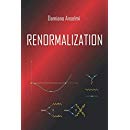Higgs fakeon
Extensions to the Standard Model that use strictly off-shell degrees of freedom – the fakeons – allow for new measurable interactions at energy scales usually precluded by the constraints that target the on-shell propagation of new particles. Here we employ the interactions between a new fake scalar doublet and the muon to explain the recent Fermilab measurement of its anomalous magnetic moment. Remarkably, unlike in the case of usual particles, the experimental result can be matched for fakeon masses below the electroweak scale without contradicting the stringent precision data and collider bounds on new light degrees of freedom. Our analysis, therefore, demonstrates that the fakeon approach offers unexpected viable possibilities to model new physics naturally at low scales.
Phys. Rev. D 104 (2021) 035009 | DOI: 10.1103/PhysRevD.104.035009
We introduce a new way of modeling the physics beyond the Standard Model by considering fake, strictly off-shell degrees of freedom: the fakeons. To demonstrate the approach and exemplify its reach, we re-analyze the phenomenology of the Inert Doublet Model under the assumption that the second doublet is a fakeon. Remarkably, the fake doublet avoids the most stringent $Z$-pole constraints regardless of the chosen mass scale, thereby allowing for the presence of new effects well below the electroweak scale. Furthermore, the absence of on-shell propagation prevents fakeons from inducing missing energy signatures in collider experiments. The distinguishing features of the model appear at the loop level, where fakeons modify the Higgs boson $h\rightarrow\gamma\gamma$ decay width and the Higgs trilinear coupling. The running of Standard Model parameters proceeds as in the usual Inert Doublet Model case. Therefore, the fake doublet can also ensure the stability of the Standard Model vacuum. Our work shows that fakeons are a valid alternative to the usual tools of particle physics model building, with the potential to shape a new paradigm, where the significance of the existing experimental constraints towards new physics must necessarily be reconsidered.
J. High Energy Phys. 10 (2021) 132 | DOI: 10.1007/JHEP10(2021)132
Talk given at the Centre de Physique Theorique of the University of Marseille on June 28th, 2019
A new quantization prescription is able to endow quantum field theory with a new type of “particle”, the fakeon (fake particle), which mediates interactions, but cannot be observed. A massive fakeon of spin 2 (together with a scalar field) allows us to build a theory of quantum gravity that is both renormalizable and unitary, and to some extent unique. After presenting the general properties of this theory, I discuss its classical limit, which carries important remnants of the fakeon quantization prescription. I also discuss the possibility that the Higgs boson might be a fakeon.
Seminar given at the Department of Physics and Astronomy of the University of Bologna on May 30th, 2019
A new quantization prescription is able to endow quantum field theory with a new type of “particle”, the fakeon (fake particle), which mediates interactions, but cannot be observed. A massive fakeon of spin 2 (together with a scalar field) allows us to build a theory of quantum gravity that is both renormalizable and unitary, and to some extent unique. After presenting the general properties of this theory, I discuss its classical limit, which carries important remnants of the fakeon quantization prescription. I also discuss the possibility that the Higgs boson might be a fakeon.

 Quantum Gravity
Quantum Gravity 


